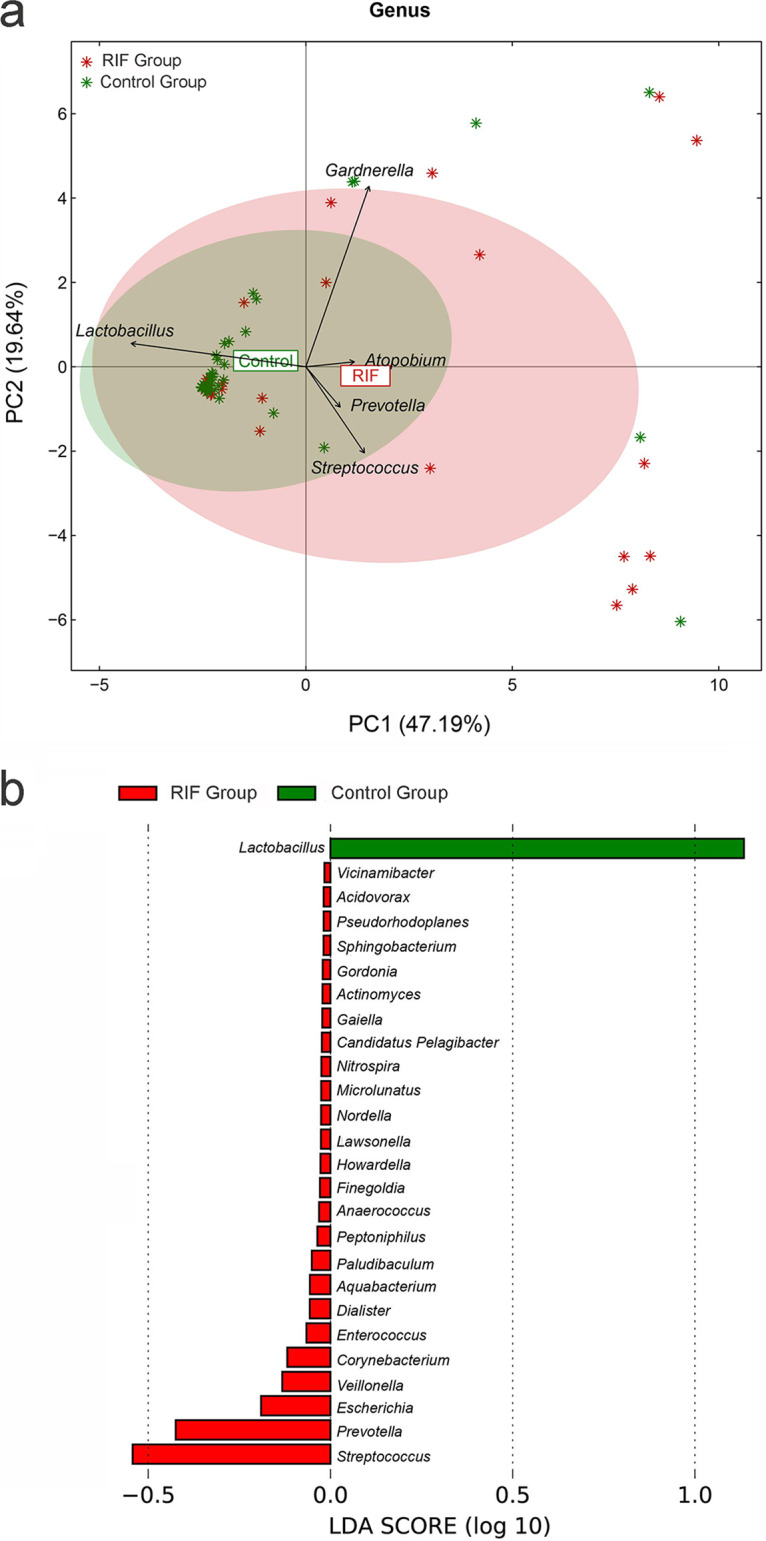FIG 3.

(a) A principal-component analysis was applied to demonstrate the distribution of the vaginal microbial communities in the samples. The arrows indicate the different genera, and their contributions to the explanation of the sample difference are shown by the arrow length. The angle between the arrows represents the positive correlation (<90°) or negative correlation (>90°) among the genera. (b) Linear discriminant analysis of the differentially abundant genera, which indicated their contribution to group differentiation. The green bar indicates that the genus (Lactobacillus) was more abundant in the control group, while red bars indicate that those genera were more abundant in the RIF group.
